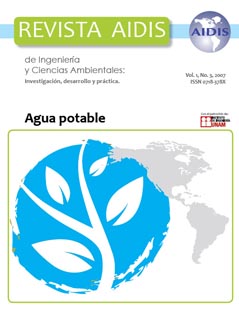Role of the microorganisms in the chemical speciation of arsenic: Analysis of sediments of Camarones river, I Region. Chile
Main Article Content
Abstract
The biogeochemical cycle of arsenic depends on microbial transformation, which affects the mobility and distribution of arsenic species in the environment, and might influence in the toxicity of arsenic. The aim was to study the microbial redox transformations of arsenic in Camarones river sediments. The biological transformation of arsenic was observed in column experiments. The detection of As (III) and As (V) was carried out for HPLC/HG/QAAS. Identification of the isolates was achieved by RapID (REMEL. INC). A qualitative KMnO4 method was used to investigate redox activity. The arsenic tolerance was carried out by serial dilution on agar plate. The arsC genes were detected by PCR. The sediments induced with arsenite showed a light decrease of As (III) concentration. On the other hand, when they were induced with arsenate there was a significant transformation of As(V) to As(III). 49 bacterial strains were isolated whose tolerance levels varied among <10 and 20 mM for As (III) and among 50 and 1000 mM for As (V). Of these, the highest percentage corresponded to the reducing bacteria (55%), 4% to oxidizer bacteria, 8% presented both activities and in 33% of the bacteria none activity was detected. The arsC gene was detected in 9 strains. In the sediment samples exists, a biological activity responsible for the arsenic transformation, this activity would be given mainly by heterotrophic arsenate reducing bacteria and in smaller proportion for arsenite oxidizing bacteria.
Article Details
How to Cite
[1]
Escalante Tresierra, G.N., Campos Araneda, V.L., Valenzuela Valenzuela, C.A., Yañez Toloza, J. and Mondaca Jara, M.A. 2009. Role of the microorganisms in the chemical speciation of arsenic: Analysis of sediments of Camarones river, I Region. Chile. Revista AIDIS de ingeniería y ciencias ambientales: Investigación, desarrollo y práctica. 1, 3 (Nov. 2009).
